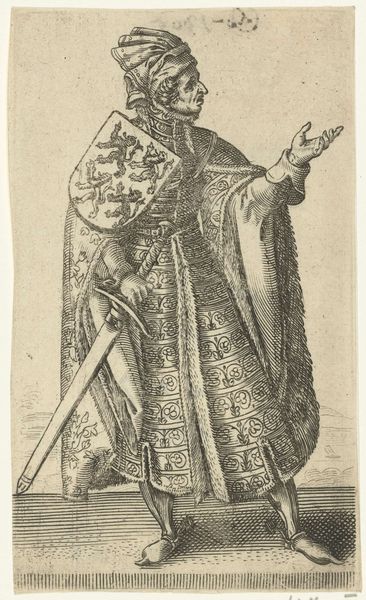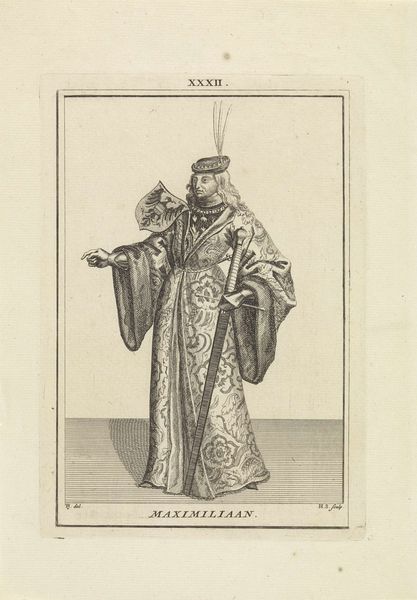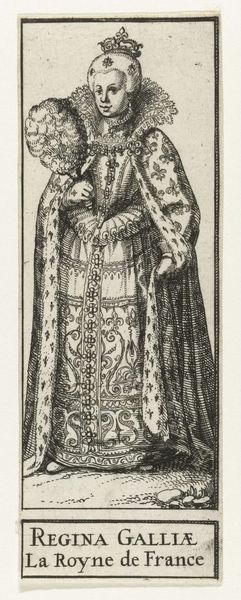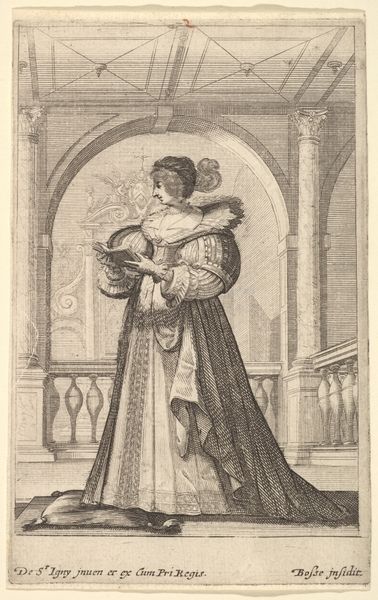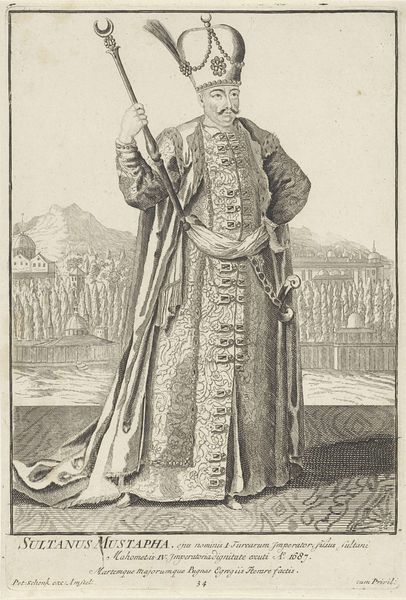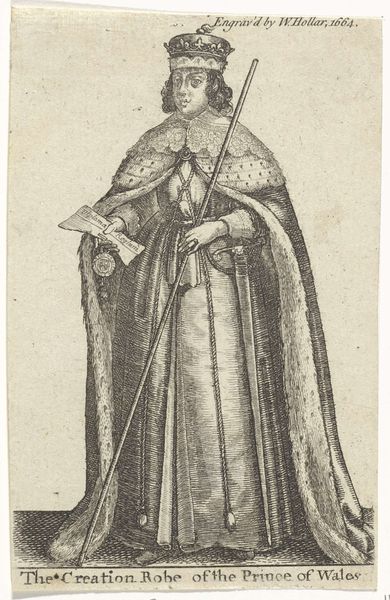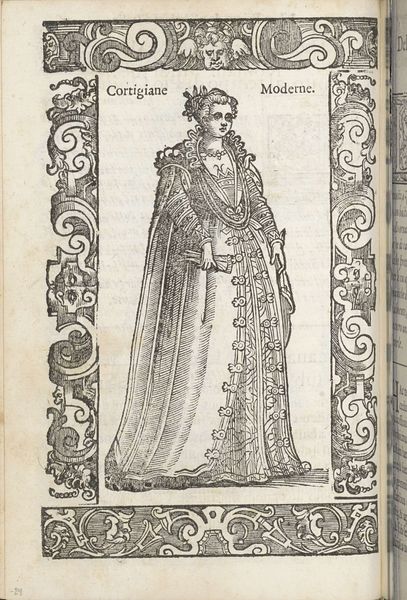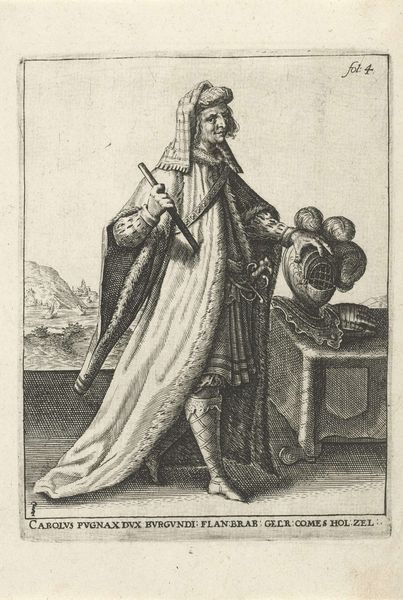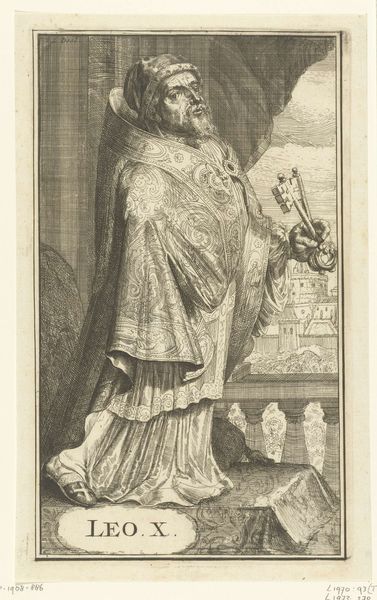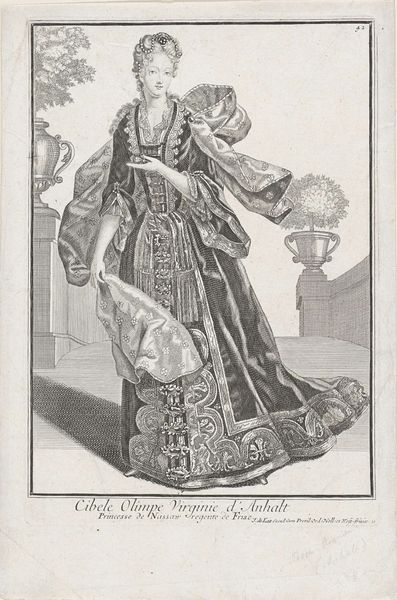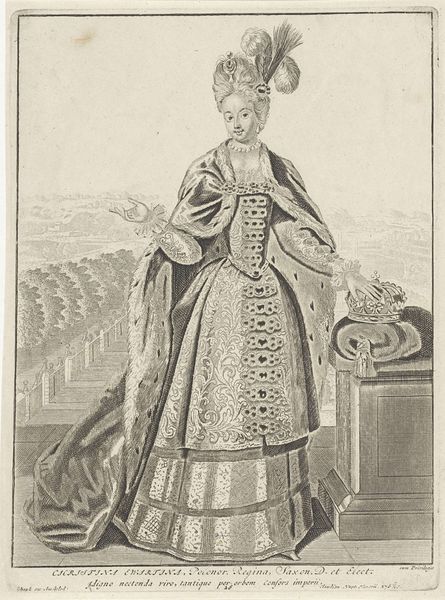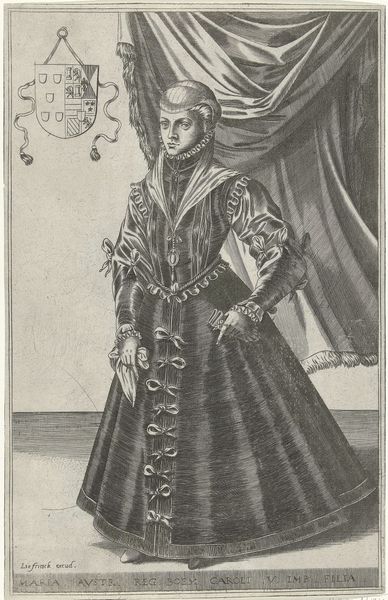
metal, engraving
#
portrait
#
baroque
#
metal
#
old engraving style
#
portrait reference
#
portrait drawing
#
history-painting
#
engraving
Dimensions: height 267 mm, width 171 mm
Copyright: Rijks Museum: Open Domain
Editor: This engraving, "Leopold I, Emperor of Germany," dates between 1675 and 1711. I believe it’s unsigned, though it’s currently held in the Rijksmuseum collection. The detail is quite remarkable, particularly the textures in the robes and hair. How do you interpret this work, considering the historical context and imagery? Curator: The symbolic weight of this image is carried by its visual vocabulary. Consider the full, flowing wig – not just a fashion statement but a symbol of power and status, a deliberate performance of authority. And observe the Habsburg lip, subtly emphasized – a visual echo connecting Leopold to his lineage, an immediate marker of dynastic continuity. Editor: So, it’s about asserting identity and legitimacy? Curator: Precisely. The ornate scepter, the heavy cloak… These aren’t merely decorative elements. Each detail participates in a carefully constructed message. Think of it as an attempt to shape public memory, embedding Leopold's image into the collective consciousness of the time and, indeed, ours. What do these symbols evoke for you? Editor: A sense of permanence and ordained right, perhaps… though, I can't help but see the wig and robe as… well, also quite absurd. Curator: A tension certainly exists between intended grandeur and perceived… excess. And the artists would have been completely aware that those tensions could be felt by their audience. It leads us to consider that their goals went well beyond just visual accuracy. Editor: So the engraving is like a carefully crafted message, playing on historical memory, status, and maybe even the potential for satire? It certainly gives you a lot to think about! Curator: Indeed. It speaks to the power of images to both reflect and shape our understanding of the past and it is this constant re-evaluation, using all of the critical resources available to us, which ensures the artwork can continue to resonate with modern eyes.
Comments
No comments
Be the first to comment and join the conversation on the ultimate creative platform.
